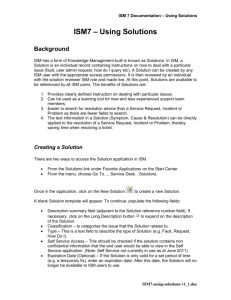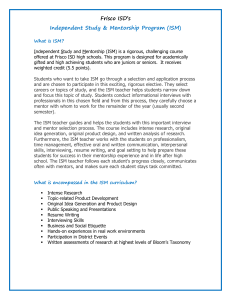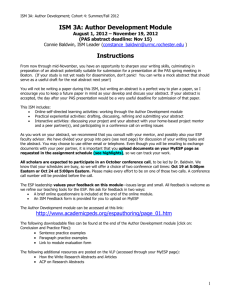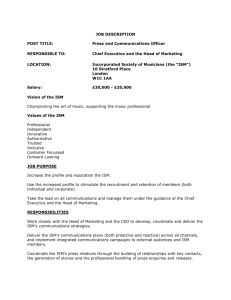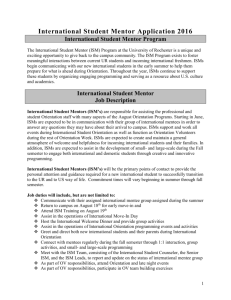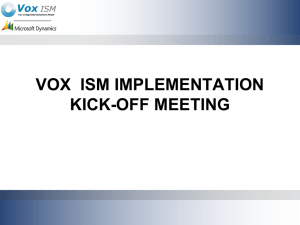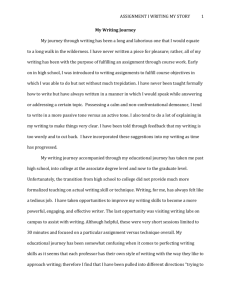110 Anti-bias Perspective Seminar
advertisement
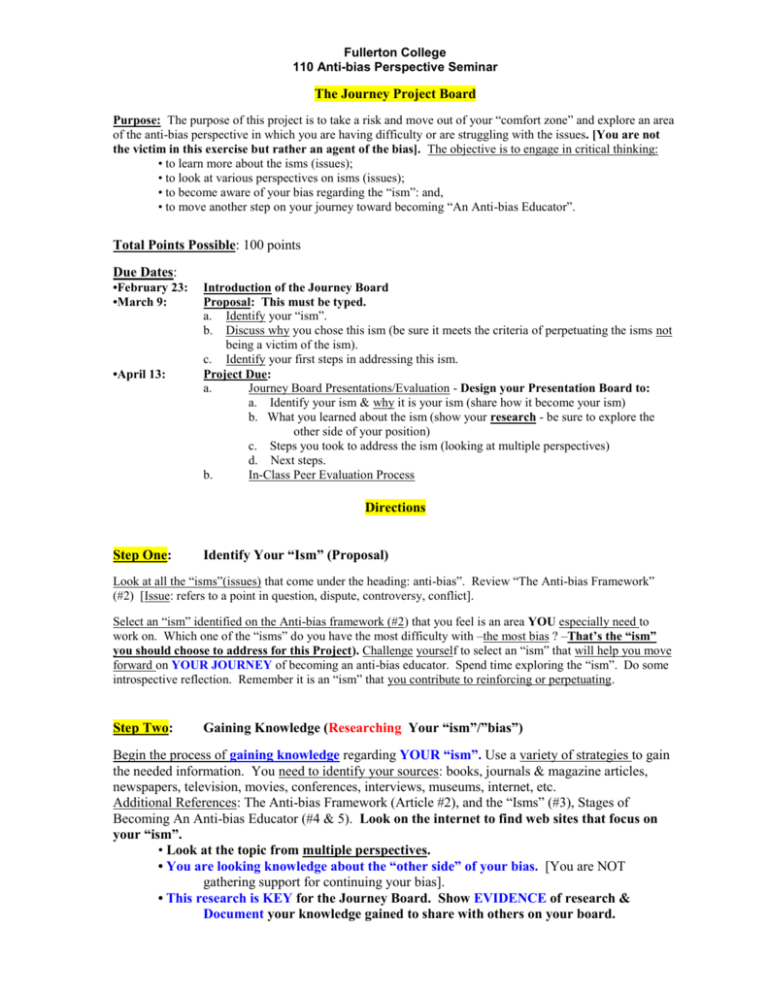
Fullerton College 110 Anti-bias Perspective Seminar The Journey Project Board Purpose: The purpose of this project is to take a risk and move out of your “comfort zone” and explore an area of the anti-bias perspective in which you are having difficulty or are struggling with the issues. [You are not the victim in this exercise but rather an agent of the bias]. The objective is to engage in critical thinking: • to learn more about the isms (issues); • to look at various perspectives on isms (issues); • to become aware of your bias regarding the “ism”: and, • to move another step on your journey toward becoming “An Anti-bias Educator”. Total Points Possible: 100 points Due Dates: •February 23: •March 9: •April 13: Introduction of the Journey Board Proposal: This must be typed. a. Identify your “ism”. b. Discuss why you chose this ism (be sure it meets the criteria of perpetuating the isms not being a victim of the ism). c. Identify your first steps in addressing this ism. Project Due: a. Journey Board Presentations/Evaluation - Design your Presentation Board to: a. Identify your ism & why it is your ism (share how it become your ism) b. What you learned about the ism (show your research - be sure to explore the other side of your position) c. Steps you took to address the ism (looking at multiple perspectives) d. Next steps. b. In-Class Peer Evaluation Process Directions Step One: Identify Your “Ism” (Proposal) Look at all the “isms”(issues) that come under the heading: anti-bias”. Review “The Anti-bias Framework” (#2) [Issue: refers to a point in question, dispute, controversy, conflict]. Select an “ism” identified on the Anti-bias framework (#2) that you feel is an area YOU especially need to work on. Which one of the “isms” do you have the most difficulty with –the most bias ? –That’s the “ism” you should choose to address for this Project). Challenge yourself to select an “ism” that will help you move forward on YOUR JOURNEY of becoming an anti-bias educator. Spend time exploring the “ism”. Do some introspective reflection. Remember it is an “ism” that you contribute to reinforcing or perpetuating. Step Two: Gaining Knowledge (Researching Your “ism”/”bias”) Begin the process of gaining knowledge regarding YOUR “ism”. Use a variety of strategies to gain the needed information. You need to identify your sources: books, journals & magazine articles, newspapers, television, movies, conferences, interviews, museums, internet, etc. Additional References: The Anti-bias Framework (Article #2), and the “Isms” (#3), Stages of Becoming An Anti-bias Educator (#4 & 5). Look on the internet to find web sites that focus on your “ism”. • Look at the topic from multiple perspectives. • You are looking knowledge about the “other side” of your bias. [You are NOT gathering support for continuing your bias]. • This research is KEY for the Journey Board. Show EVIDENCE of research & Document your knowledge gained to share with others on your board. Step Three: Sharing Your Knowledge (Journey Board Presentation) Design & develop a Presentation (Display) Board to show the new knowledge and insight YOU gained regarding YOUR “ism”. (Journey Board Presentation) [The Presentation (Display) boards can be purchased at Staples, Office Depot, Michaels, Tall Mouse, etc. They are thick cardboard with a larger center section and two smaller side sections that fold over to protect your work—see presentation boards brought to class—needs to be that size ( “ x “ ) or they will not be graded. Sometimes they are called Science Presentation Boards. Should cost around $5-10.] • THE BOARD NEEDS TO SHOW YOUR JOURNEY [Past/Present/Future] • Future = strategies you are now going to implement. • Be creative in sharing this insight. • Make it interesting as well as informative. • Need to provide evidence of your knowledge gained from your research as well as your stories on the Board. NEED to SEE YOUR JOURNEY ON ADDRESSING THIS ISM! • Need to show resources on your board (connect the resources to your research on your board). • It needs to be neat and eye catching. • Incorporate color, pictures, text, etc. Step Four: Poster Session (Sharing & Evaluating Your Work) • Bring in your Presentation (Display) Board. • Display your Journey Project Board on the tables. • You will be given time to explore each Journey Board and view/read the journeys of your classmates. There will be a peer evaluation component during this process. • After reading & evaluating the Journey Boards, we will gather for a class reflection of the process. Fullerton College 110 Anti-bias Perspective Seminar The Journey Board – Instructor Evaluation Name: ______________________________ Grade: __________ Presentation Board: 1. Clearly Identified YOUR “ism”: 2. Showed Knowledge Gained on YOUR JOURNEY (This is your RESEARCH. Be sure to identify sources). THIS IS THE KEY SECTION! 3. Identified YOUR GROWTH & NEXT STEPS that You Need to Take on This “Ism”: 4. Evaluation of the Design & Development of the Presentation Board: 5. Turned in Typed Proposal Work & Journey Board on Due Dates: 6. Prepared for Presentation and Completed the Peer Evaluations: [Peer Assessment (Use Peer Evaluation forms provided)]
